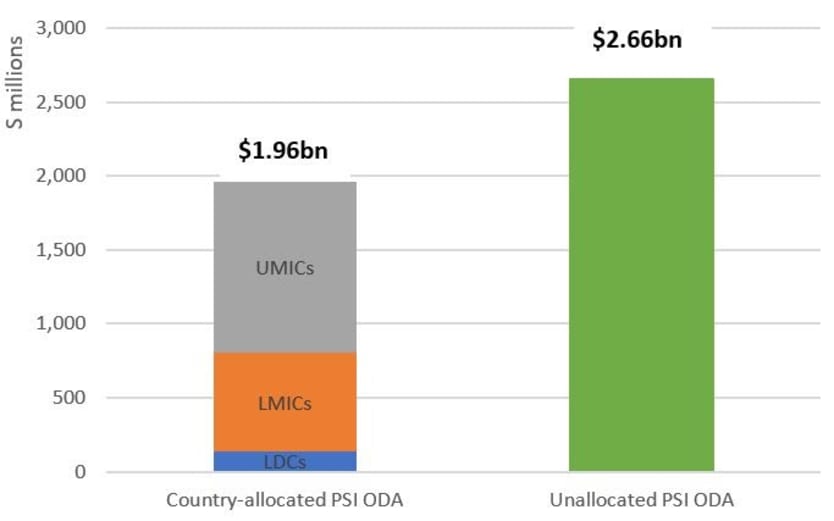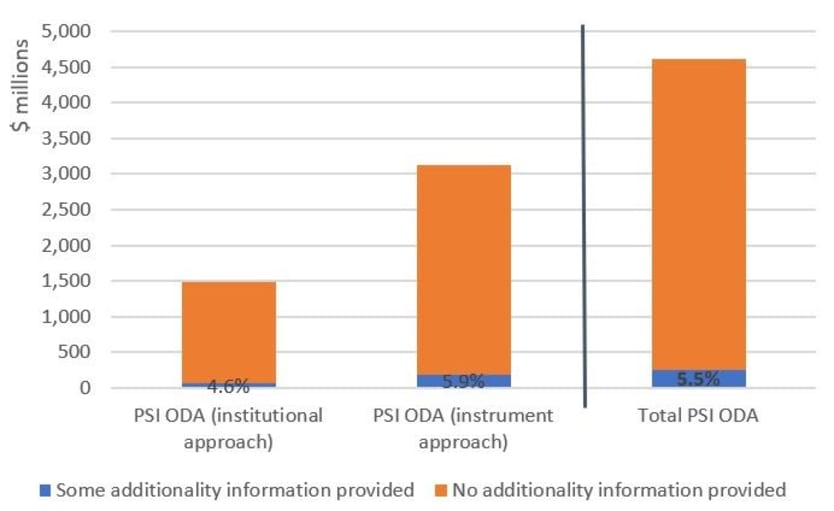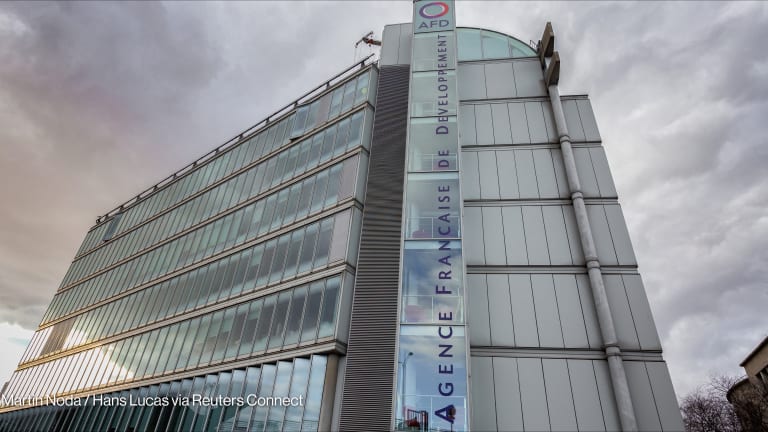
For the first time, the full data for 2018 official development assistance, or ODA, which was released by the Organisation for Economic Co-operation and Development’s Development Assistance Committee this February, included data on aid spending through private sector instruments, or PSIs, according to the interim rules agreed on by DAC members in December 2018. This agreement was a key, albeit controversial, step that is blurring the boundary between ODA and commercial transactions.
While the publication of this new data is welcomed, it’s important to get the rules on reporting spending through private sector instruments right from the beginning. The current total represents a limited amount of 2018 ODA: 2.7% of total bilateral ODA. But given the increasing pressure on donors to mobilize additional sources of funding for the SDGs, channeling aid through PSIs seen as catalytic instruments represents an attractive way to help fill in the SDG financing gap.
The expectation is, therefore, that funding of this type would have increased in 2019 and will keep increasing in the future.
Crucially, this shift in how aid is channeled must complement its unique role in the financing landscape rather than limit it. To ensure this, evidence is needed on the additionality of spending through PSIs and its impact on sustainable development — notable by their absence from the new data.
What does available data tell us?
In 2018, DAC donors reported a total of $4.6 billion in gross ODA spent through PSIs — or $2.9 billion in net terms. Almost one-third of the amount reported was under the institutional approach. This measures the transfer of ODA-eligible funds to a development finance institution, or DFI, or other vehicles such as investment funds. The rest was reported under the instrument approach, which measures each PSI transaction — on a grant-equivalent basis — between the DFI and the private enterprise or institution in the partner country.
Neither method tells us anything about the impact that aid spending via PSIs is having on inequality and on people living in poverty. Both are limited in the information that they provide on additionality, and only the funding reported under the instrument approach gives detail on how the resources were used.
Assessment of the data underlines the transparency and accountability limitations resulting from the current interim reporting measures and shows the importance of strengthening them to ensure the integrity of ODA.
Eight donors reported their PSI ODA — totaling $1.5 billion, according to the institutional method — with the U.K., Norway, and Canada reporting the largest amounts. This almost exclusively meant increasing financing of bilateral DFIs, in the form of grants or equity investments, and lacks detail on which specific projects have been funded or in which countries investments were made.
Another 10 donors reported a total of $3.1 billion according to the instrument approach — mostly in the form of loans and equity investments — with the EU, France, and Germany reporting the largest amounts.
Where the detail on recipient countries is available — mostly for the data reported under the instrument approach — it shows that the 59% of country-allocated PSI ODA goes to upper-middle-income countries — mainly Turkey, Serbia, and Brazil — compared to 7% for least developed countries.

Similarly, in terms of sectors, the vast majority is invested in productive sectors and economic infrastructure and services — $4 billion out of the total — while only $281 million is reported to have been invested in social sectors, such as health.
Both the geographical and sectoral distributions of PSI ODA illustrate that this funding does not currently target the poorest countries and the sectors with proven impact on poverty reduction and addressing inequalities, such as health and education. While this is not surprising given the need for financial returns in addition to development results, when the private sector is involved, it does raise concerns about whether increases in the use of PSIs will result in a shift away from uses of aid that can benefit those most at risk of being left behind.
Is donors’ PSI aid really additional?
Additionality — both in financial terms and in terms of value — is a key rationale for channeling aid through PSIs to the extent that, under the current rules, it risks replacing concessionality as a key characteristic of ODA. The term “additionality” refers to the extent to which using ODA can enable investments that, otherwise, would not have taken place and/or would not have had the same level of development impact. Channeling ODA through PSIs is expected to be additional on one or both of the financial and value fronts.
However, only a handful of donors reported on the additionality of their PSI investments and only for a small proportion — 5.5% — of the total. Even in these cases, information is limited and nonspecific. For example, donors refer to investments being made in high-risk countries, clients, or sectors and to the increased scale and quality of development impact as a result of their involvement — but with no detail on who is set to benefit or what the likely impact on poverty and inequality may be.
The lack of information on additionality is particularly problematic for the resources reported under the institutional approach given the well-documented gaps in impact reporting practices by DFIs.

Time to return to the negotiating table
The private sector has an important role to play in sustainable development, but its involvement in development cooperation should not come at the price of diluting the unique role of ODA. The current PSI rules have the potential of disincentivizing aid channeled through the public sector, which in many contexts — particularly those affecting the most vulnerable — remains vital for achieving the SDGs and leaving no one behind. Action is needed.
As a first step, ahead of the 2019 ODA data release, DAC members should ensure they meet or exceed the requirements of the 2018 PSI agreement in their reporting — including taking full advantage of the additionality fields provided in the Creditor Reporting System. This would ensure greater quality of data as well as consistency between the reports of different donors — which, as our analysis shows, is currently lacking.
Ultimately, however, these concerns can only be resolved by DAC members returning to the negotiating table on PSIs with raised ambitions. Scarce concessional public resources can only be used once, and the closer we get to the 2030 SDG deadline, the more we should ensure that the progress of the poorest and most marginalized people remains at the heart of ODA allocations.
Editor’s Note: All of the data points mentioned in the article have been calculated by the authors using the full dataset of the OECD.Stat’s Creditor Reporting System for 2018, downloaded on Feb. 13, 2020.









